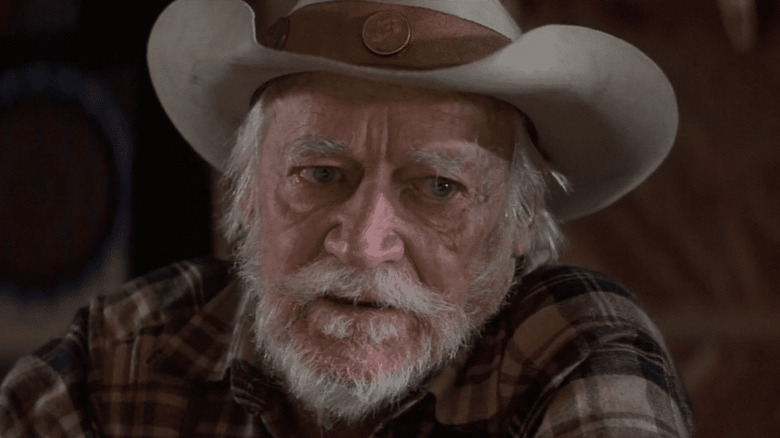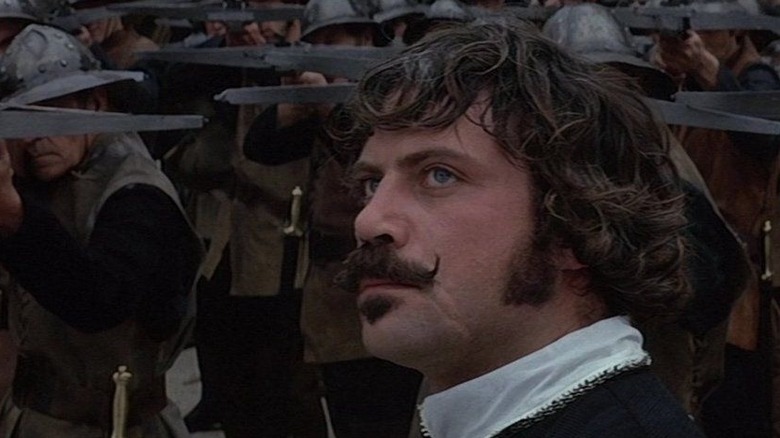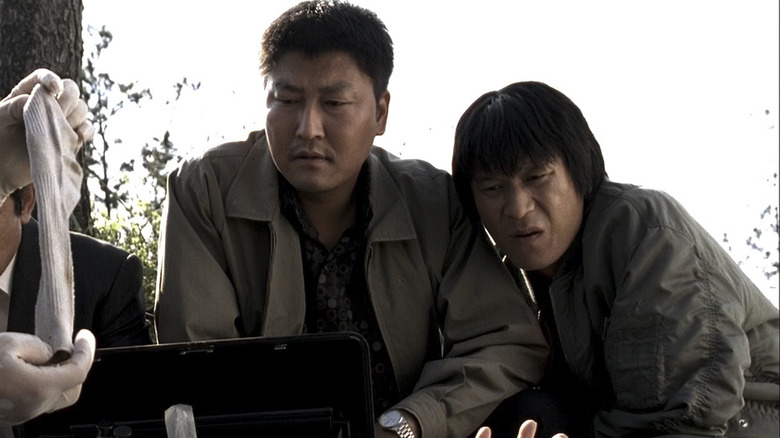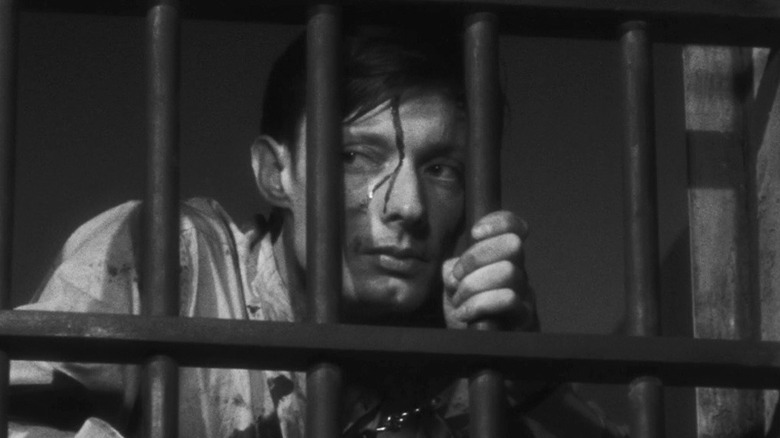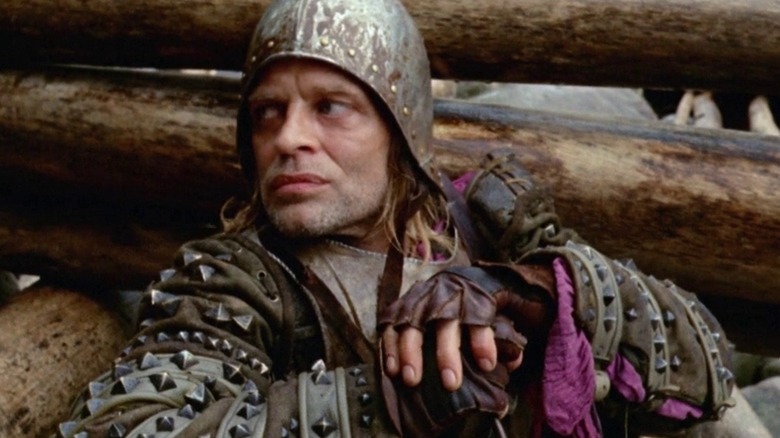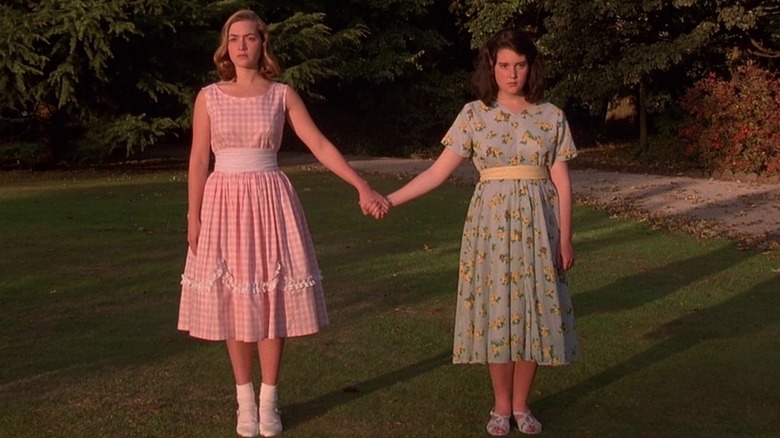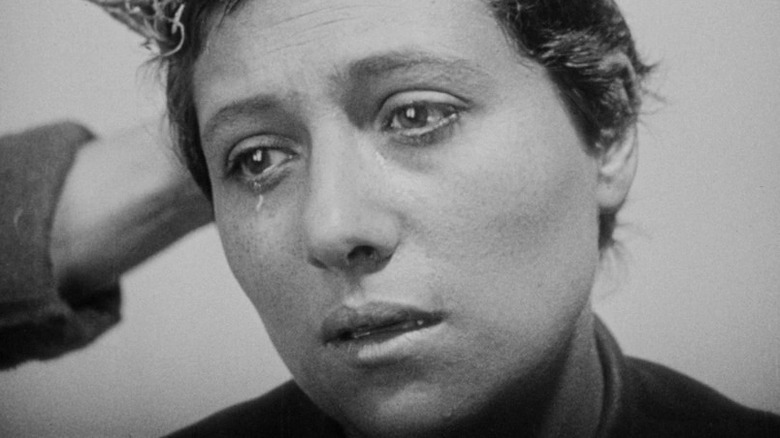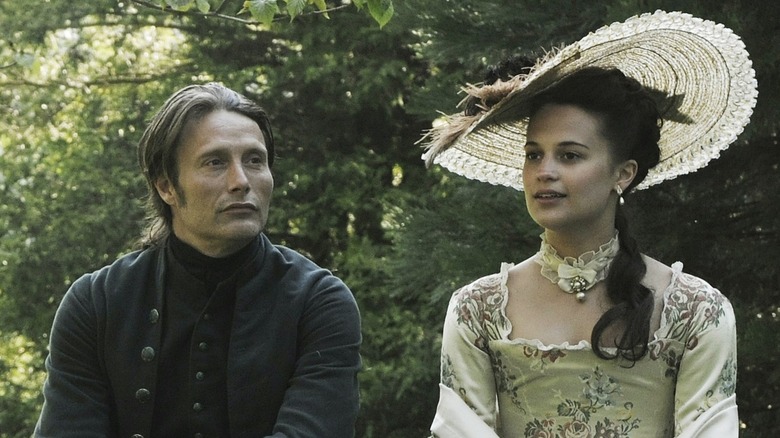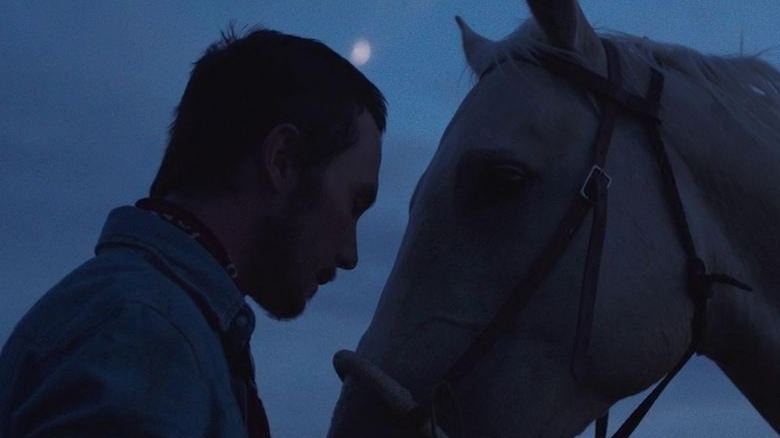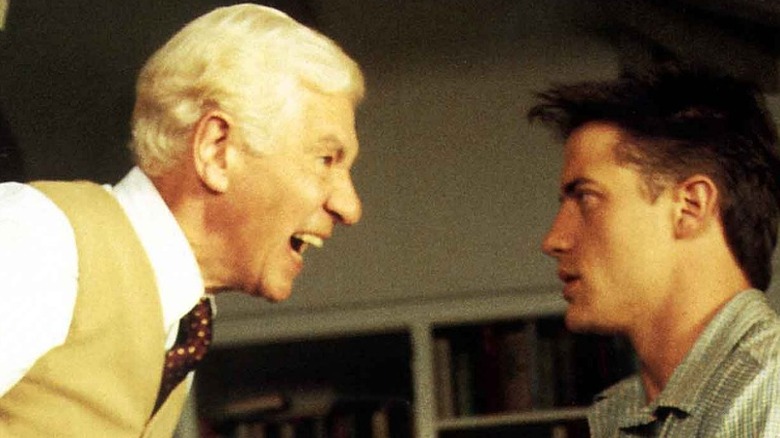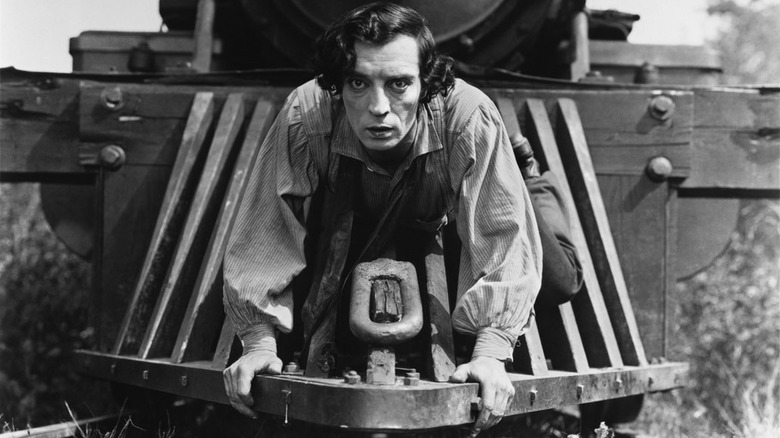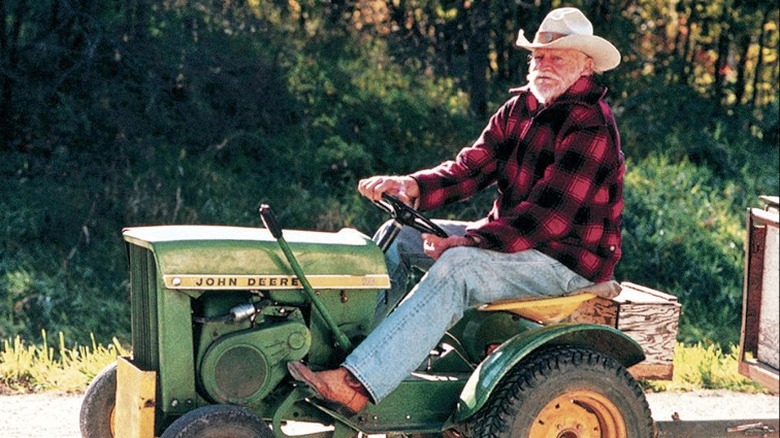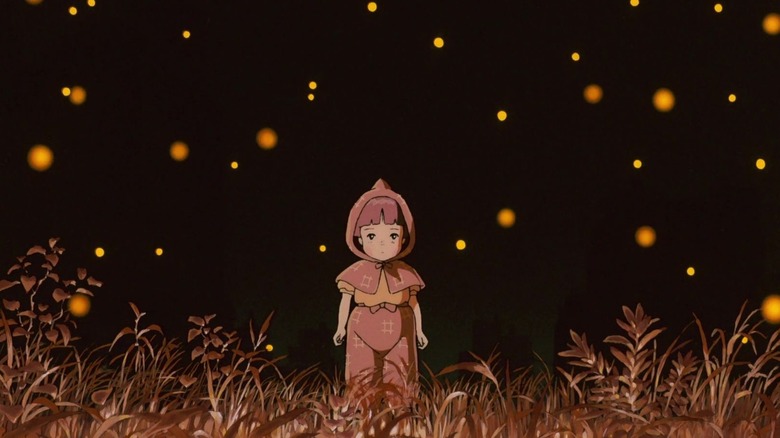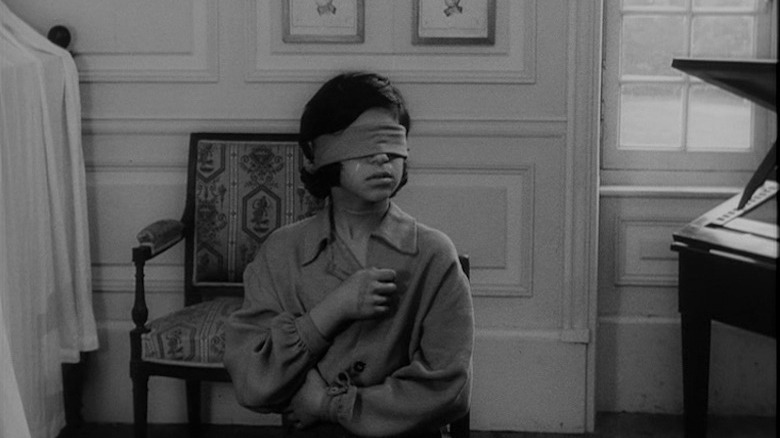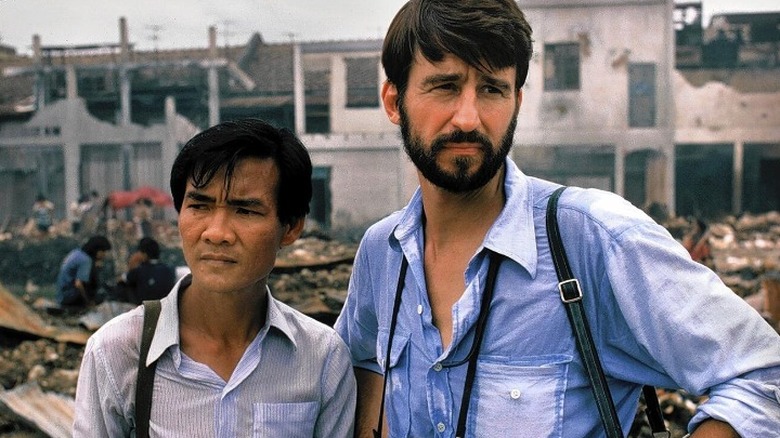The Best Movies Based On True Stories You've Never Seen
You know what they say: truth is stranger than fiction. Which means that true stories make for some darn good movies.
Indeed, many of Hollywood's finest offerings are inspired by real-life events and personal accounts of resilience and tragedy. Fantasy is fine and dandy, but some of the best yarns are ripped straight from the pages of history. There's just something about seeing an obstacle overcome, a once-in-a-lifetime opportunity achieved, or a cinderella story actualized — and knowing it really happened.
So, whether you're in the mood for a famous criminal case or an inspiring tale of spiritual fortitude, here's a rundown of 14 excellent films based on things that really occurred. If any of these amazing films have somehow flown under your radar, take our advice and track them down. For real.
The Devils (1971)
Ken Russell's "The Devils" is not the first dramatization of the possessions of Loudun. But it is far and away the most infamous.
An adaptation of both John Whiting's play of the same name and Aldous Huxley's non-fiction book "The Devils of Loudun," Russell's film depicts the absolutely bananas events that befell the city of Loudun, France in the 17th-century. In the film, the French court resolves that the city's fortifications must be demolished to strengthen the State's grip on the minds of the French people. The walled and uncommonly liberal city of Loudun resists, thanks to the efforts of its de facto leader, Urbain Grandier (Oliver Reed), an especially groovy parish priest. Weaponizing the local Ursuline order to dispose of Grandier, the Church whips the repressed nuns into a hysterical frenzy and encourage the sisters to accuse Grandier of bewitching them.
While "The Devils" takes certain liberties with the finer details of the historical event, it does so to push a thesis. Namely: that the whole affair was orchestrated by Cardinal Richelieu and that the Mother Superior, Sister Jeanne des Anges, who vindictively participated in the plot after Grandier refused to become the convent's spiritual director. However, like much of Russell's other historical dramas, the tweaks are mostly superficial and in the interest of forwarding a powerful emotional truth about the corrupting possibilities of intermingling religion and politics.
Memories of Murder (2003)
Bong Joon-ho's take on the hard-boiled detective genre sees a nation struggling with an uncomfortable truth: they've got a serial killer on their hands.
Set in the mid-1980s, the film follows two local detectives (Song Kang-ho and Kim Sang-kyng) who've been assigned to untangle a string of strangely similar murders. Ultimately, the case drives the duo into an obsessive frenzy, maddened and dejected at the ineptitude of the system they serve. The second feature-length film from Bong Joon-ho, "Memories of Murder" is a staggeringly well-crafted and intelligently paced mystery that somehow balances absurdist humor with unflinching tragedy. You will also, quite simply, not find another procedural thriller with this many drop kicks.
The film is loosely based on South Korea's first serial murder case, which saw a series of related killings between 1986 and 1991. The victims were all women who were found bound, gagged, violated, and often asphyxiated with their own clothing. The cultural impact of the killings is often compared to that of the Zodiac Killer in the United States.
A Man Escaped (1956)
Robert Bresson's stripped-down, heart-pounding, process-driven film tells of a French Resistance fighter's daunting escape from the notorious Montluc prison. Starring François Leterrier in the leading role as Fontaine, "A Man Escaped" remains one of the most suspenseful jailbreak films of all time. Today, the film is often regarded as Bresson's masterpiece. The National Board of Review named "A Man Escaped" as one of the best foreign films of 1956. And the following year, when it played at the Cannes Film Festival, Bresson won a Best Director award.
The film is based on the memoirs of an imprisoned school teacher-turned French Resistance soldier named André Devigny, who escaped from the supposedly escape-proof Montluc prison in Lyon in 1943, during the Second World War. After his successful escape attempt (a logistical feat that included a worn-down spoon, a rope made out of mattress cover, and a grappling hook fashioned out of a lantern), Devigny fled to Switzerland. It is worth noting that Bresson himself was detained by the German army for over a year, an experience that plays out on-screen alongside Devigny's.
Aguirre, the Wrath of God (1972)
The first of five collaborations between German director Werner Herzog and the notoriously difficult actor Klaus Kinski, "Aguirre, the Wrath of God" follows the story of a ruthless Spanish soldier, Lope de Aguirre (Kinski), in his journey down the Amazon River in search of El Dorado, a mythical city said to be entirely built of gold. In their arrogant quest for riches, Don Aguirre and his men descend into a hell of their own making, plagued by madness, bad luck, and all the physical ailments of a rebelling jungle. Appraising the film for its 2013 re-release, The Guardian's Peter Bradshaw praised "Aguirre" as "one of the great folies de grandeur of 1970s cinema." The film boasts a 96% critical consensus on Rotten Tomatoes.
While the narrative details of "Aguirre" are more or less allegorical, Don Aguirre was a real historical figure: a 16th Century conquistador remembered by history as a villain of colonial Spanish America and a striking example of the cruelty and arrogance of imperialism. The real-life Aguirre did indeed partake in a quest to locate the fabled golden city. In 1559, with no wars to fight, the Spanish government concocted a fool's errand for its bored and violent soldiers (Aguirre included): to find the legendary city of El Dorado. Aguirre didn't earn the nickname "El Loco" for nothing. After murdering his commander, Aguirre declared himself an enemy of the Spanish Crown. Which (surprise, surprise) irked King Phillip II, who had Aguirre killed.
Heavenly Creatures (1994)
An affluent and precocious teenager named Juliet (Kate Winslet) moves from England to New Zealand, where she befriends the shy, brooding Pauline (Melanie Lynskey). The pair share a love of fantasy and literature, and their friendship quickly blossoms into an intense bond. When their parents begin to worry that their obsessive connection is becoming unhealthy, the pair concoct a sinister plan to thwart any attempts to keep them apart. Written by Peter Jackson's wife and creative partner Fran Walsh, "Heavenly Creatures" marked Jackson's arrival as more than just a cult horror-comedy director. The film premiered at the Venice International Film Festival, where it won the Silver Lion. It went on to receive an Oscar nomination for Best Original Screenplay.
The film dramatizes the events of the Parker-Hulme murder case, which took place in Christchurch, New Zealand in the mid 1950s. On June 22nd 1952, 16-year old Pauline Parker and her close friend, 15-year old Juliet Hulme, murdered Parker's mother Honorah. The girls' powerful co-dependent friendship ultimately proved destructive when Juliet's family announced their plan to send her to live with relatives in South Africa. The girls murdered Parker's mother in an attempt to increase their chances of Pauline joining Juliet in Africa. A sensational trial ensued, and both girls were jailed, separately, for five years.
The Passion of Joan of Arc (1928)
Widely considered one of the benchmarks of Western cinema and a masterpiece of the silent era, "The Passion of Joan of Arc" depicts the saint's torment and questioning in the hours leading up to her execution. Directed by Carl Theodor Dreyer, it makes the case for the martyr's resolution and spiritual fortitude, with Renée Jeanne Falconetti's performance as Joan frequently heralded as an unambiguous artistic achievement.
The film takes place during the period of time that Joan of Arc was held captive and put on trial in England. The documentary record of Joan of Arc's trial is rich, and has survived through history thanks to its subject's infamy, as well as the trial's investigation and ultimately overturned verdict. The trial was held in 1431, during which a legal representative took notes. Three of the five copies of the collated notes still survive. Dreyer's screenplay was heavily based on the original transcripts of Joan's trial compiled by Joseph Delteil, with Dreyer's final script condensing 29 investigations (which took place over one-and-a-half years) into a single day.
A Royal Affair (2012)
In a blend of adulterous intrigue and political rebellion, "A Royal Affair" follows the tumultuous life of Denmark's young British-born queen (Alicia Vikander), who weds the infantile king of Denmark (Mikkel Boe Følsgaard) only to fall in love with his most trusted advisor, the court physician (Mads Mikkelsen). Secretly a social reformer and an adherent of forward-thinking Enlightenment principles, the physician attempts to use his and the queen's collective influence to alter the course of their nation's political trajectory. The film was awarded with two Silver Bears at the Berlin International Film Festival and was nominated for the Academy Award for Best Foreign Language film.
"Affair" depicts the romance that took place in 18th Century Denmark between queen Caroline Matilda and Johann Friedrich Struensee, as well as the former's influence on the introduction of Enlightenment thought to then-conservative Denmark. The film largely draws from two novels concerned with the events surrounding Struensee's time at the Danish court, Bodil Steesen-Leth's "Prinsesse af blodet" and, at least surreptitiously, Per Olov Enquist's "The Visit of the Royal Physician”. Both texts, like the film itself, take liberties in the interest of compelling storytelling. But where it counts (a.k.a. the romantic and political affair in question), the film's dramatization is faithful to history.
The Rider (2017)
Chloé Zhao's "The Rider" is a gorgeous neo-Western about a talented horse trainer named Brady Blackburn (Brady Jandreau) who is warned by a doctor that he must stop riding after a horse crushes his skull at a rodeo. After returning to his home at the Pine Ridge Reservation, Brady finds that without the ability to feel like a proper cowboy, he doesn't really know who he is. Searching for purpose and wrestling with feelings of impotence, Brady attempts to piece his life, and his identity, back together.
"The Rider" mirrors and re-stages Jandreau's own rise and fall from skilled rodeo rider to directionless cowboy. In addition to playing a version of himself, Jandreau's friends and relatives (including his father and sister) feature in the film, a blurring of reality and storytelling that has since become a directorial trademark for Zhao.
The film is full of authentic moments, including a spellbinding sequence where Jandreau tames a horse in real-time. All told, as the AV Club notes, "The Rider" is so authentic it feels like watching a retroactive documentary.
Gods and Monsters (1998)
Once one of the most powerful directors in Hollywood, James Whale (Ian McKellen), the man behind "Frankenstein" and "The Bride of Frankenstein” is withering away in retirement. After an endless string of young gay lovers, the reclusive director buries himself in his past glory. That is, until his glowering housekeeper Hanna (Lynn Redgrave) hires a young, charismatic gardener named Clayton (Brendan Fraser). Both military veterans, the two men form a bond that goes far beyond the scope of Whale's typical hookups.
Based on Christopher Bram's 1995 novel "Father of Frankenstein," the film tells the semi-fictionalized story of the final days of James Whale, as seen through the eyes of Clayton, a fictitious character. The real-life Whale lived as an openly gay man throughout his career, which was effectively unheard of in the early 20th Century. While the plot presented in the film is by and large speculative, other details (like Whale's sketches) are factual, as testified to in the film's DVD extras.
The film boasts a 95% critical consensus on Rotten Tomatoes. Both McKellan and Redgrave received Oscar nominations for their performances, while Bill Condon's script waltzed away with the Academy Award for Best Adapted Screenplay.
The General (1926)
"The General" may be almost a century old, but its comedic delights and impressive stunt work are liable to make you think less of every other train-set action movie that followed in its tracks ... pun intended.
Starring one of the most daring stuntmen cinema has ever produced, "The General" tells the tale of Johnnie Gray (Buster Keaton), an engineer whose beloved locomotive, The General, is stolen by Union spies ... with Johnnie's fiancée Anabelle aboard. In hot pursuit, Johnnie takes matters into his own hands to retrieve the two loves of his life: his train and his girl.
Loosely adapted from William Pittenger's memoir "The Great Locomotive Chase," "The General" takes inspiration from a real event that took place during the early years of the American Civil War. During a military raid in mid-April of 1862, Union volunteers commandeered a Confederate train (named, you guessed it, The General), in an effort to wreak havoc on vital railroad infrastructure north of Georgia. While Keaton's reimagining of the North vs. South conflict as a romantic comedy was initially a flop with critics, today, "The General" is considered to be one of the most revered and essential comedies of the silent era.
The Straight Story (1999)
Yes, David Lynch made a Disney movie. And yes, it is about a man driving across Iowa and Wisconsin on a lawn mower — and it's really, really good.
"The Straight Story" dramatizes the very real journey of Alvin Straight, a World War II veteran who, in the summer of 1994, drove a 1966 John Deere riding lawn mower 240 miles (390 km) to visit his ailing brother. Straight wasn't doing so hot himself in the health department, and thanks to a laundry list of afflictions, was not able to procure a driver's license. Ergo: the lawn mower.
All told, the trip took six weeks, but the film — filled with slow, contemplative meditations on aging, family, and the moments that matter, will stick with you for a lifetime. Shot along Straight's actual route, Lynch's film boasts a 95% critical consensus on Rotten Tomatoes.
Heralded as a "celestial piece of Americana" by Entertainment Weekly, the film received a nomination for the Palme d'Or at the 1999 Cannes Film Festival. Stuntman-turned-actor Richard Farnsworth, who had terminal cancer that left him partially paralyzed and needing two canes to walk, gave a performance as Straight that would make him the oldest ever Oscar-nominated Best Actor (at the time); he died just a few months after the ceremony.
Grave of the Fireflies (1988)
Rightfully regarded as one of the most emotionally devastating films ever made, Isao Takahata's "Grave of the Fireflies" takes place in the final months of World War II, following teenage Seita (Tsutomu Tatsumi) and his kid sister Setsuko (Ayano Shiraishi).
After the siblings are orphaned when their mother is killed in an air raid, they are sent to live with their disagreeable aunt. Soon, a falling out leaves them living in an abandoned bomb shelter, where they struggle to survive. Produced by Studio Ghibli, the film offers an unrelenting portrayal of the horrors of war and the loss of innocence too often left in its wake. "Grave of the Fireflies" boasts a critical consensus of 100% on Rotten Tomatoes and has been heralded as one of the greatest war films of all time.
The film is based on Akiyuki Nosaka's semi-autobiographical short story of the same name. Published in 1967, the film tells the story of Nosaka's experiences before, during, and after the firebombing of Kobe in 1945, a campaign waged by the United States against Japanese military and civilian centers. The short story relays how many of Nosaka's family members, including his father and two sisters, died as a result of the firebombing and its aftermath. The story is framed as an apology to Nosaka's adopted infant sister, Keiko, who died of malnutrition.
The Wild Child (1970)
Directed by François Truffaut, one of the founding fathers of the French New Wave, "The Wild Child" tells the story of a young boy (Jean-Pierre Cargol) who spent the first 11 years of his life in the wilderness with little to no human contact.
Set in the late 18th Century, the film begins with the discovery of a feral child on the outskirts of a small town. He is immediately imprisoned in a mental institution. However, a young doctor (played by Truffaut himself) resolves to prove that the boy (who he names Victor), is of sound mind and merely requires instruction to reintegrate into society. The film offers a sincere and ultimately life-affirming portrait that skirts around any kind of cloying melodrama. As Roger Ebert noted in his four-star review, the film is emblematic of one of Trauffaut's key artistic interests: "the way young people grow up, explore themselves, and attempt to function creatively in the world."
The film is based on the events reported by Jean Marc Gaspard Itard, a French physician who oversaw and documented the case of Victor of Aveyron, a prepubescent feral child who Itard named Victor. Victor's case proved central to the Enlightenment's interest in education and nature vs. nurture as well as pedagogical advancements with respect to developmentally disabled children. While Victor never managed to become a fully functioning member of society, he led a peaceful life until the age of 40, when he died of pneumonia.
The Killing Fields (1984)
Roland Joffé's biographical drama depicts a friendship between two journalists covering the Khmer Rouge regime: Cambodian Dith Pran (Haing S. Ngor) and American Syndey Shanberg (John Malkovich).
The film was nominated for 12 BAFTAs and received seven Oscar nominations at the 57th Academy Awards, winning three. This included a Best Supporting Actor win for Ngor, a survivor of Pol Pot's regime with no prior acting experience. Though, as fellow performer Julian Sands noted in a 2014 interview with "The Guardian": "you had to be a pretty good actor to survive the Khmer Rouge."
The film takes place in 1975 during the vicious takeover of Cambodia, which led to the execution of 2-3 million people over the course of the next four years. The film's screenplay is adapted from a 1980 memoir Schanberg wrote for The New York Times Magazine called ”The Death and Life of Dith Pran," and the resulting film might just be one of the most powerful movies ever made.
